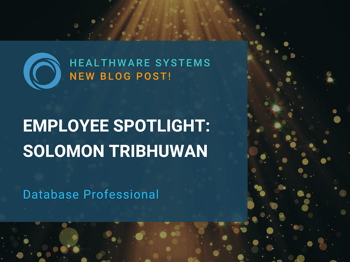Addressing Healthcare Staffing Shortages with RPA
Posted on Wednesday, January 12, 2022
Healthcare staffing shortages for both clinical and non-clinical positions are creating major challenges for the healthcare industry and the COVID pandemic has exacerbated the issues in numerous ways.
Here are some of the trends fueling healthcare staffing shortages and/or making it difficult to fill open positions:
The long-standing burnout crisis has become even worse due to the demands of the pandemic and has led to healthcare workers quitting or retiring early.
Some healthcare workers who choose not to follow vaccine mandates are placed on leave, terminated, resign, or retire early.
Employees who test positive for COVID (and some who are exposed or experience symptoms) must quarantine and miss work. They may also remain home to care for sick family members or children.
If any non-clinical positions went remote as a result of the pandemic they can now potentially be filled by applicants from anywhere in the country, pressing healthcare organizations to compete for employees on a much larger, nationwide basis.
Healthcare staffing shortages place additional responsibilities and stress on healthcare employees, requiring them to work longer hours and contributing further to burnout as well.
Non-clinical staff may be asked to assist clinical staff, leaving less time to complete their regular job duties.
Addressing Healthcare Staffing Shortages with RPA
RPA (robotic process automation) can help strained organizations complete key tasks that may be left unattended during staffing shortages.
Robotic process automation is the use of software robots to automate repetitive and time-consuming tasks. For example, RPA can be applied to insurance verification, coverage discovery/insurance scrubbing, prior authorization, 835/ERA/EOB posting, document delivery to payer portals, real-time note posting, high-volume data entry, order transcription, progress reporting, medical records aggregation, credentialing, and much more.
RPA alleviates many burdens for overworked healthcare employees, allowing them to focus on higher-level objectives and interactions with patients and leaving them with a more manageable volume of work.
Furthermore, as new COVID variants continue to emerge and force infected healthcare workers to stay home, it’s clear that a major benefit of software robots is that they never need sick days (or vacation days, or any time off). In fact, software robots not only work 24/7, but can also execute tasks more quickly than humans. RPA is the perfect solution for preventing workflow interruptions and delays in the midst of healthcare staffing shortages.
More Reasons to Choose Robotic Process Automation
Two common myths about RPA are that it’s difficult to implement and that it’s expensive. In reality, RPA is easy to employ. It requires minimal IT support or participation, and software robots interact directly with other software applications and websites utilizing the user interfaces that already exist. Utilizing AI, software robots can even adapt to special use cases and outliers to carry out virtually any scenario or work process.
Robotic process automation also saves organizations money. Below are just a few of the financial benefits of RPA:
RPA increases efficiency and speeds up workflow.
RPA reduces deficiencies and security/compliance threats by limiting the opportunity for human error.
Software robots don’t necessitate hiring/training costs and time.
Software robots won’t ask for a raise and don’t need benefits or other competitive job incentives to accept an open position.
RPA delivers a high return on investment by providing a better performance at a lower cost.
Getting Started with RPA
“Healthcare facilities must be prepared for potential staffing shortages and have plans and processes in place to mitigate these shortages. These plans and processes include communicating with HCP (healthcare personnel) about actions the facility is taking to address shortages, maintaining patient and HCP safety, and providing resources to assist HCP with anxiety and stress.”
HealthWare Systems can help your organization mitigate these healthcare staffing shortages by applying RPA to your processes and analyzing your users’ activities to identify and automate redundant tasks. We have many free resources available to you, including:
Our guide: 5 Steps to Getting Started with Robotic Process Automation (RPA)
Blogs: “What Is RPA?” and “5 Myths About RPA”
Videos on our YouTube channel
Free consultations!
Contact us to set up a free consultation on how to apply RPA at your facility. We can help you address healthcare staffing shortages and relieve overworked employees of monotonous manual labor. Learn more about RPA, the future of healthcare, today!

